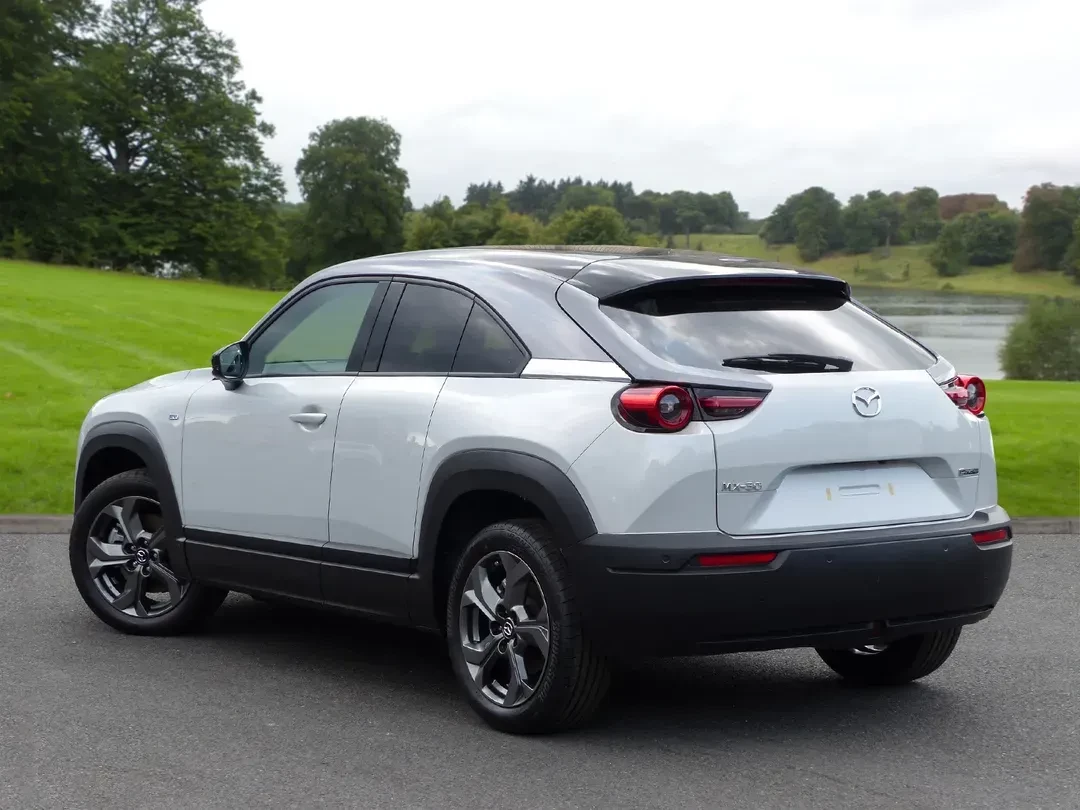Mazda has always been keen on sustainability. From eco-friendly materials in its vehicles to greater use of electrification, Mazda is quickly cleaning and refining its model range while reducing its environmental impact when producing them. Mazda’s clean-running range of cars at David Hayton includes its practical SUV models.
Mazda’s SUVs have continued to soar in popularity, but how are these high-riding models being made more sustainable, and how is this brand becoming greener for the future? In this article, we’re going to find out.
Mazda’s Commitment to Sustainability
Commitments show a firm promise to change - and that’s exactly what Mazda has done. By 2030, Mazda aims to have a quarter of its products globally as electric cars, with the remainder made up of electrified vehicles of some sort - be that mild hybrid, regular hybrid or plug-in hybrid. You’ll already find these clean-running powertrains in many of its SUVs at the moment, too.
Then, by 2050, Mazda is planning to ensure that its entire operations are carbon neutral, right the way from its cars through to its manufacturing processes and sales.
Green Innovations
Mazda sustainability is aiming to reduce its global emissions footprint through innovation, which is something that the brand is known for the world over. Key areas of change include making its engines even more efficient so that in areas where electric power isn’t possible, the alternative is as clean-running as can be. You’ll find that already taking place in Mazda’s Skyactiv-X engines which ensure fuel is burnt efficiently and cleanly.
Mazda is also investigating the use of cleaner fuels which, again, can help lessen the impact that a combustion engine has on the environment. These carbon-neutral fuels could be blended with existing petrol and diesel supplies to help make them cleaner overall. However, electrification does play a huge part in Mazda’s sustainability journey, which is why you’ll see battery-assistance technology being implemented more widely in this brand’s range of cars over the coming years.
Eco-Friendly Materials
Eco-friendly materials are a much-used way of lessening a car’s impact on the environment while also ensuring that it can be recycled more easily when it does reach the end of its life. One of the most eye-catching uses of an eco-friendly material by Mazda was the cork trim on the electric and range-extended MX-30, but you’ll find a variety of other examples throughout the brand’s range.
Bio-based plastics are a common theme throughout Mazda’s cars and these are made through more sustainable sources than typical plastics. Plant-based bio-upholstery fabric feels noticeably soft to the touch, too, but comes through eco-friendly processes, rather than being made from ‘raw’ ingredients. Even the paint on some of Mazda’s cars is being made greener, through the use of aqua-tech shades which reduce CO2 emissions but bring the same finish as ‘normal’ paint.
You’ll find several eco-friendly materials used in Mazda’s latest cars. The latest CX-80 SUV, for example, has door trims which are made from recycled plastic bottles, while bio-based plastic is found in a variety of finisher sections.
Green Car Production
One of the key ways in which Mazda is helping to reduce CO2 emissions across its entire production is through something called a Life Cycle assessment. With this, the brand can easily look at specific areas across the company’s chain to focus on key areas where CO2 emissions could be reduced.
A Life Cycle Assessment measures emissions from areas such as the supply chain, factories, transportation and - of course - the cars to see where the most CO2 is being emitted and how this could be brought back down. Plus, it takes into account end-of-life measures where cars are recycled.
SUV Model Range Currently Available at David Hayton
Though you might not traditionally think that an SUV could deliver a sustainable mode of transport, Mazda’s current line-up is a little different. At David Hayton, we’ve got some of Mazda’s latest eco-friendly SUV models to check out today, including the new CX-80, which can be equipped with a plug-in hybrid engine capable of delivering up to 38 miles of electric-only running.
There’s also the uber-efficient MX-30. Available both as a fully electric vehicle or as a range-extender model—with the latter using a compact petrol engine which acts as a generator for the electric motor—the MX-30 is one of Mazda’s most eco-friendly cars, with a variety of eco-friendly materials used throughout.
The CX-60, meanwhile, occupies a space between the two, bringing a good deal of space, decent handling and - most importantly - low running costs and emissions thanks to the option of either plug-in hybrid or diesel powertrains.
Here at David Hayton, we’ve got Mazda’s latest vehicles, which are all made with sustainability in mind. From our production right the way through to how they drive on a day-to-day basis, each of these cars has been designed to lower their impact on the environment while still returning a good driving experience and loads of space inside. Head over to our website to check them out today.


